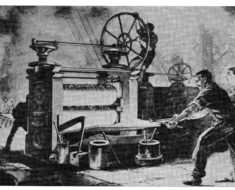
Finding out who your ancestors were can be a fun and enjoyable hobby; for others, it’s a more serious endeavor committed to tracing your lineage and finding out the most you can about who you are and where you came from. Whatever your reasons for wanting to trace your family tree, it’s a unique experience with a great reward if you make interesting and perhaps shocking discoveries.
Tracing your family tree is an important experience in that it serves as a reminder that we’re all human beings, regardless of ethnicity and where our ancestors came from.
Substantially tracing your family tree and filling in the gaps takes a lot of time and patience. Here is a helpful guide on the steps you need to take.
1. Preparation
In order to know where to look and what you’re searching for, it’s a good idea to gather together all the knowledge you already have and prepare as much as you can. Keeping documents and notebooks will be very helpful throughout the process. It would be beneficial to check through old photo albums, any childhood and dusty family belongings you might have, whether at home or stored away in the attic, and any general guidance you can find on distant relations. It might even be an old photograph which has their name and location scrawled on the back.
It’s also important to speak to your family and living relatives about what they may know. Explain to them that you’re attempting to trace your family tree, and any information they have would help. Even if there are distant family members you haven’t spoken to in a while, reaching out to them may result in invaluable information for your family tree.
2. Keep Track of Your Findings

Source: https://learnenglishteens.britishcouncil.org/
Once you have begun to uncover things from old memories and discover information from family members you speak to, you’re going to want to keep track of everything. It may also be the case that some information you uncover contradicts what someone in your family told you, or some other piece of information you found. If this happens, it’s important to evaluate the situation the best you can and retain the piece of information you think is more reliable. Is one family member more reliable than another, for example? Trust the information given by a more reputable source.
How you want to organize your findings is up to you, but keeping electronic documents can sometimes be easier to assess all information in one place rather than rifling through physical papers.
3. Try a DNA Kit
To truly delve into your ethnic makeup and where your ancestors came from, investing in a DNA kit is advisable. These can be ordered and bought online and used in your own home, with delivery to your address, meaning you don’t have to venture out to any professional laboratories to get any tests done. You can read this Living DNA test kit review to give you an idea of how it all works.
This can be a great option if your living relative resources are limited, or you don’t have any ample documentation, memories, or photos to lead you on the right path.
4. Get to Grips with the Relevant Certificates

Source: https://www.onelegal.com/
Birth, death, and marriage certificates will be valuable resources in your research. These will better help you see the pattern of your family line, as you trace back through children, marriages, and births. It’s important to understand the registry of these certificates to be able to relate them to one another adequately.
These records can be accessed in a variety of ways. You can pay for a copy of any certificate with the USA Government website, and they can easily be ordered and paid for online on the Government website and delivered to your home address.
The National Archives is a historical organization which can help you with your research into your family history. They will give you access to census records and birth, death and marriage certificates, with experienced staff on hand to answer any questions.
5. Things to Remember
Some births may not have been registered, and a lot of information in these types of records can be misspelled, inaccurate, or registered under a completely different name. Details such as this can be confusing and throw you off when you’re trying to trace your family history, so it’s important not to take everything at face value. It’s also possible there may be transcription errors, so be prepared for mistakes.









































